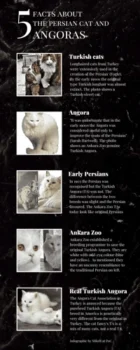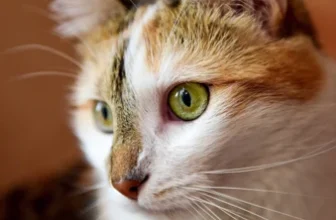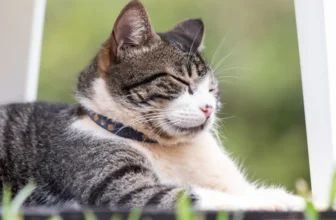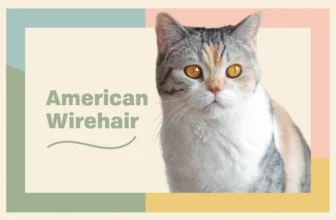Despite being one of the lesser-known cat breeds, the American Wirehair is beloved by many pet owners for their unique coat and playful personality. However, there are several myths surrounding their coat that can often be misleading for potential owners. In this article, we’ll be debunking some of the most common myths about American Wirehair coats. We’ll explore topics such as hypoallergenic claims, grooming recommendations, hairballs, bathing, and greasy coats. By the end of this article, you’ll have a better understanding of how to care for your American Wirehair and keep their coat healthy and happy.
Myth #1: American Wirehairs Are Hypoallergenic

It’s often said that American Wirehaired cats are a good choice for people with cat allergies. However, is this really true? Hypoallergenic Claims: Truth or Fiction? In this section, we’ll dive into the topic to debunk one of the most widespread myths surrounding American Wirehair cats. We’ll explore the science of allergies and cats and see whether or not this breed is indeed hypoallergenic. To learn more about American Wirehair coat traits, click here.
Hypoallergenic Claims: Truth or Fiction?
When it comes to cat allergies, many breeds have been dubbed as “hypoallergenic.” This label is given to breeds that are believed to produce fewer allergens, making them better for those with allergies. However, this claim is both true and false.
The Truth
It is true that some breeds may produce fewer allergens than others. Breeds with less fur or breeds that shed less may produce fewer allergens, reducing symptoms for those with allergies.
The Fiction
However, no cat breed is entirely hypoallergenic. Cat allergens are found in a cat’s skin, saliva, and urine, which means that even hairless cats can produce allergens. Allergies can also be caused by other sources such as pollen and dust, which can easily be carried by a cat’s fur.
In the case of American Wirehair cats, claiming the breed is hypoallergenic is not accurate. The breed has a unique coat that’s both hard and crimped, which is different from most cats. However, the fact that American Wirehairs have a wire-like texture doesn’t mean they produce fewer allergens than other breeds.
It’s essential to understand that allergies are unique to each individual and can vary in severity. If you want to own an American Wirehair but have allergies, it’s best to meet and interact with the breed to gauge your sensitivity level.
To learn more about American Wirehair coats and why they’re different from other breeds, check out our article on the genetics behind American Wirehair coat texture. If you’re interested in grooming tips specifically for American Wirehairs, head over to our article on how to groom an American Wirehair coat.
The Science of Allergies and Cats
Many people assume that American Wirehairs are hypoallergenic, but unfortunately, this is a myth. All cats produce a protein called Fel d 1 in their skin and saliva, and it’s this protein that causes an allergic reaction in humans. Even hairless cats produce the protein, so there’s no such thing as a truly hypoallergenic cat. However, some cat breeds produce less of the protein than others and may be less likely to cause an allergic reaction.
There is no scientific evidence to suggest that American Wirehairs produce less Fel d 1 than other breeds, so they may not be the best choice for those with cat allergies. However, some people with mild allergies may still be able to tolerate them.
It’s important to note that allergies can be caused by other factors besides cats, such as dust, pollen, and mold. If you’re experiencing allergy symptoms, it’s best to consult with a doctor to determine the cause.
In summary:
- All cats produce Fel d 1 protein, which can cause allergies in humans
- American Wirehairs are not hypoallergenic
- There is no evidence to suggest that American Wirehairs produce less Fel d 1 than other breeds
For more information on the American Wirehair coat, check out our article on the evolution of the American Wirehair coat. If you’re interested in learning about the different coat patterns of American Wirehairs, read our article on American Wirehair coat patterns.
Myth #2: American Wirehair Coats Don’t Need Grooming
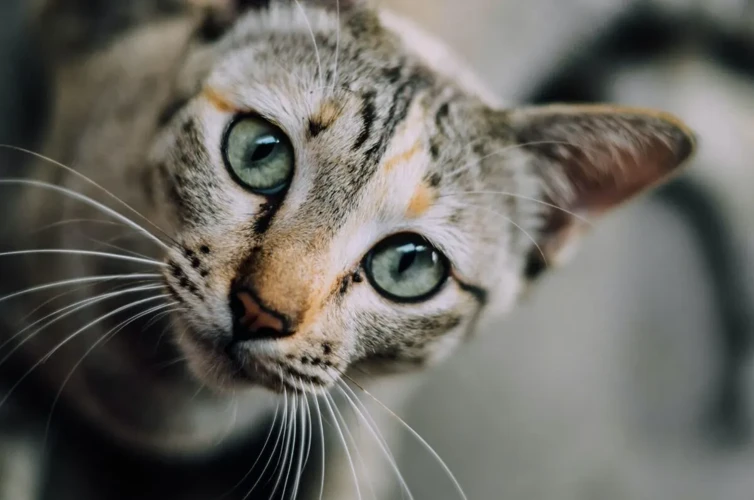
When it comes to cat grooming, there are many misconceptions about different breeds. One myth that has persisted about American Wirehair cats is that they don’t need grooming. However, this couldn’t be further from the truth. While American Wirehairs may have a unique coat type, it still requires regular grooming to keep it healthy and looking its best. In this section, we’ll explore the truth behind this myth and provide you with tips for properly grooming your American Wirehair. So, let’s dig in and uncover the reality behind this perplexing myth.
American Wirehair Coat Type: What to Look For
When it comes to American Wirehair coats, they have some unique characteristics that distinguish them from other breeds. Here are some things to look for when examining an American Wirehair’s coat:
- Texture: As the name suggests, American Wirehairs have a wire-like texture to their fur. The hairs are crimped, bumpy, and spring back when touched. This gives their coat a unique curly appearance that sets them apart from other breeds.
- Density: American Wirehairs also have a dense coat. This is due to the fact that they have both an undercoat and guard hairs. The density of their fur provides them with insulation and helps keep them warm during colder seasons.
- Color: American Wirehairs come in a range of colors, from black to white and everything in between. They can also have tabby or tortoiseshell patterns. It’s important to note that their coat color doesn’t affect whether they are hypoallergenic or not.
- Length: While the texture of an American Wirehair’s coat can make it appear longer than it is, the actual length of their fur is considered medium. Their hair typically grows to around 1-2 inches in length.
- Shedding: While American Wirehairs are not hypoallergenic, they do shed less than other breeds. This is due to their unique coat texture, which doesn’t allow loose hairs to easily fall out.
Knowing these characteristics can help owners better understand how to groom and care for their American Wirehair’s coat. It’s important to note that while their unique coat may not require daily grooming, it still needs to be brushed and maintained on a regular basis to keep it healthy and looking its best.
Grooming Recommendations
Grooming is a vital aspect of caring for an American Wirehair cat. Even though their coats are low-maintenance in comparison to other breeds, they still require some upkeep. Below are a few grooming recommendations for American Wirehairs to keep their coat healthy and shiny.
| Grooming Recommendations | Description |
|---|---|
| Brushing | Using a slicker brush, gently brush the coat once or twice a week to remove dead hair and prevent mats. Focus on the areas with longer hair, such as the underarms, tail, and belly. |
| Bathing | While American Wirehairs do not need frequent baths, they may require one occasionally. Use a mild cat shampoo and rinse thoroughly. Avoid getting soap in their eyes or ears, and dry the coat well after the bath. |
| Nail Trimming | Trim the nails every few weeks to prevent them from growing too long. Use specialized cat nail clippers and be sure to avoid the pink area known as the quick, which contains blood vessels and nerves. |
| Tooth Brushing | Brushing your cat’s teeth can be beneficial to their overall dental health. Use a small toothbrush and toothpaste formulated for cats, and brush gently at a 45-degree angle. Start slow and be patient. |
By following these grooming recommendations, you can keep your American Wirehair cat’s coat looking its best and maintain their overall health. Remember to always approach grooming sessions with patience and care, using gentle strokes to avoid causing any discomfort to your furry friend.
Myth #3: American Wirehairs Can’t Get Hairballs

Cat owners are often concerned about hairballs – a common occurrence in felines. However, some believe that American Wirehair cats are immune to these furry masses due to their unique coat type. Is this fact or fiction? Let’s explore the truth behind this myth and determine whether American Wirehairs can indeed get hairballs.
The Facts About Hairballs and Cats
Cats groom themselves by licking their fur, which can lead to hairballs. Hairballs are solid obstructions composed of hair and digestive juices that can form in a cat’s digestive tract. While hairballs are common in cats, they can sometimes cause problems if left untreated. Here are some facts about hairballs and cats:
- Hairballs are a natural occurrence: Hairballs are a common occurrence in most cats, especially long-haired breeds. Cats typically expel hairballs by vomiting them up.
- Hairballs can cause digestive issues: While most cats can expel hairballs without any issue, hairballs that are too large to pass through the digestive tract can cause digestive problems, such as constipation, diarrhea, and loss of appetite.
- Cats with hairball problems may exhibit certain symptoms: If your American Wirehair is experiencing digestive problems, they may be struggling with hairball-related issues. Common symptoms include vomiting, retching, gagging, and loss of appetite.
- Preventative measures can help: Some preventative measures may reduce the likelihood of hairballs forming in your American Wirehair, such as regular grooming to remove loose fur, feeding them a diet rich in fiber, and ensuring that they stay hydrated.
- Medical intervention may be necessary: If your American Wirehair is experiencing hairball-related issues frequently, it’s important to consult with your veterinarian. They may recommend a hairball remedy or a dietary change to alleviate the issue.
By understanding the facts about hairballs and cats, you can help ensure the health and wellbeing of your American Wirehair. Remember to practice preventative measures and seek medical advice if necessary.
Preventing Hairballs in American Wirehairs
Keeping your American Wirehair cat from suffering from hairballs can be achieved with a few simple steps. Regular grooming is essential to prevent hairballs from forming in the first place. Here are some additional preventive measures you can take:
- Brushing: Brush your American Wirehair daily to remove loose hair. This is especially important during shedding season. Make sure to use a brush specifically designed for cats with wire coats.
- Feeding: A diet consisting of high-quality food can help to prevent hairballs. Look for food that contains natural fiber to help move hair through the digestive system.
- Adding fiber: If your American Wirehair is prone to hairballs, you can add a little bit of canned pumpkin (not pumpkin pie filling!) or a fiber supplement to their food. This can help to move hair through the digestive tract.
- Providing fresh water: Make sure your cat has access to fresh water at all times. Staying hydrated can help your cat’s digestive system function properly, which can help to move hair through the body.
By taking these simple steps, you can help to prevent hairballs from forming in your American Wirehair and keep them healthy and happy.
Myth #4: American Wirehairs Need Frequent Baths

Despite what some may think, frequent baths are not necessary for American Wirehairs. It’s a common misconception that their unique wire-like coat requires constant washing to maintain its texture and appearance. However, this myth can actually do more harm than good since cats typically dislike being bathed and over-bathing can dry out their skin and coat. So, let’s explore why American Wirehairs do not need regular baths and how to properly care for their coat.
The Importance of Water in a Cat’s Life
Water is a crucial component of a cat’s life and overall health. Without enough water, a cat’s body can quickly become dehydrated, leading to potential health issues. An American Wirehair’s coat can become greasier and dirtier if not properly hydrated. Here are some key factors to keep in mind when it comes to water and your American Wirehair:
- Water Consumption: It is important to ensure that your American Wirehair is drinking enough water daily. While the exact amount varies depending on several factors, cats typically need about one ounce of water per pound of body weight per day. This means that if your cat weighs 10 pounds, they should be drinking about 10 ounces of water each day.
- Hydrating Foods: Wet cat food can also contribute to a cat’s overall hydration levels. Wet food typically contains more moisture than dry food, helping to keep cats hydrated. Consider adding water to your American Wirehair’s food bowl to increase their water intake.
- Water Sources: Make sure your American Wirehair has access to clean and fresh water at all times. Some cats prefer running water, so consider investing in a water fountain designed for pets. Ensure that your cat’s water bowl is cleaned and refilled with fresh water regularly.
- Dehydration Signs: It is important to keep an eye out for signs of dehydration in your American Wirehair, including lethargy, dry nose and gums, and sunken eyes. If you suspect your cat is dehydrated, seek veterinary care immediately.
- Summer Months: During the hotter months, it is even more essential to monitor your American Wirehair’s water intake, as cats can become dehydrated more quickly. Consider placing additional water bowls around your home to encourage your cat to drink more.
By prioritizing your American Wirehair’s hydration needs and ensuring they have access to plenty of clean water, you can help keep your feline companion healthy, happy, and comfortable.
Bathing Tips for American Wirehairs
When it comes to bathing American Wirehairs, there are some tips that can make the process easier for both you and your feline friend. Here are some bathing tips for American Wirehairs:
| TIP 1: | Only bathe your American Wirehair when necessary. Over-bathing can strip their coat of natural oils and cause dryness and irritation. |
| TIP 2: | Use a cat-specific shampoo and conditioner. Human shampoos can be too harsh for cat’s sensitive skin. |
| TIP 3: | Prepare the bathroom and all necessary items before bringing in your cat. This will make the process more efficient and less stressful for your cat. |
| TIP 4: | Use lukewarm water to wet your cat and rinse them thoroughly. Avoid getting water in their eyes and ears. |
| TIP 5: | Gently massage the shampoo into your cat’s coat, being careful not to irritate their skin. |
| TIP 6: | Rinse your cat thoroughly, making sure to remove all shampoo residue. Failure to do so can cause skin irritation and discomfort. |
| TIP 7: | Use a soft towel to dry off your cat, and avoid using a hair dryer as the noise and hot air can be overwhelming for them. |
| TIP 8: | After the bath, reward your American Wirehair with a treat or some extra cuddles. This will help them associate bath time with positive experiences. |
By following these tips, you can ensure that your American Wirehair stays clean and comfortable without causing undue stress or irritation. Remember that every cat is different, and you may need to adjust your approach based on your pet’s unique personality and needs.
Myth #5: American Wirehairs Have Greasy Coats
Pet owners might have noticed that American Wirehair cats sometimes have a shiny, oily look to their coat, leaving them wondering if it’s a sign of poor health or inadequate grooming. However, what owners might not know is that this phenomenon is actually just a hair type unique to the breed, and not necessarily indicative of an unkempt coat. In this section, we’ll separate myth from fact and explore the reasons behind this phenomenon, along with some tips for managing it.
The Cause of Greasy Coats in Cats
Many factors can contribute to a cat’s greasy coat. Here are some possible reasons why a feline’s fur may be excessively oily:
- Poor Diet: A cat’s diet plays a significant role in its overall health and appearance. If a cat’s diet lacks essential nutrients and supplements, it can lead to a dull, greasy coat.
- Overactive Sebaceous Glands: Sebaceous glands produce oil that moisturizes and protects the skin. If these glands become overactive, they can produce excess oil and make a cat’s coat greasy.
- Parasites: Fleas and mites are common parasites that can cause a greasy coat and other skin problems. If your cat is constantly scratching or appears uncomfortable, it may have a parasite infestation.
- Genetics: Some cat breeds, including American Wirehairs, may be more prone to having greasy coats than others due to their genetic makeup.
- Health Issues: Certain health conditions, such as hyperthyroidism and Cushing’s disease, can cause a cat’s coat to become greasy. If you suspect your cat may have a health issue, it’s essential to seek veterinary care immediately.
If your American Wirehair has a greasy coat, it’s important to identify the underlying cause and address it to restore its coat’s shine and health. Regular grooming, a balanced diet, parasite prevention, and routine veterinary care can all help keep your cat’s coat looking its best.
How to Manage a Greasy Coat in American Wirehairs
Having a greasy coat is a common issue for American Wirehairs, but it is not impossible to manage. Here are some tips on how to keep your American Wirehair’s coat looking its best:
| Tip #1: | Use a gentle shampoo specifically formulated for cats. Avoid shampoos that contain harsh chemicals and detergents, which can dry out the skin and make the coat even greasier. |
| Tip #2: | Brush your American Wirehair’s coat regularly to distribute the natural oils evenly and prevent matting. Use a comb or brush with firm bristles to help remove dirt and debris from the coat. |
| Tip #3: | Consider adding supplements to your American Wirehair’s diet that can improve overall skin and coat health. Omega-3 and omega-6 fatty acids, as well as biotin and zinc, can all help reduce excess oil production. |
| Tip #4: | Use a dry shampoo in between baths to absorb excess oil and freshen up your American Wirehair’s coat. Baking soda, cornstarch, and oatmeal are all natural options that can be used to absorb excess oil. |
| Tip #5: | If your American Wirehair’s coat is excessively greasy, consider talking to your veterinarian. They may recommend a medicated shampoo or other treatments to help balance the skin’s oil production. |
By following these tips, you can help manage your American Wirehair’s greasy coat and keep them looking their best. Regular grooming and proper nutrition are key when it comes to maintaining a healthy coat, so be sure to prioritize these practices in your cat’s routine.
Conclusion
As we come to the end of our journey debunking the common myths about American Wirehair coats, it’s important to reflect on the valuable information we’ve learned. Through scientific research and expert recommendations, we’ve discovered that many assumptions about these unique cats are unfounded. Let’s take a moment to review the key takeaways from our exploration.
Summary of Debunked Myths
After debunking the common myths about American Wirehair coats, it’s important to summarize the key takeaways. Here are the top myths about American Wirehair coats that have been debunked:
- Myth #1: American Wirehairs are hypoallergenic.
- Myth #2: American Wirehair coats don’t need grooming.
- Myth #3: American Wirehairs can’t get hairballs.
- Myth #4: American Wirehairs need frequent baths.
- Myth #5: American Wirehairs have greasy coats.
By understanding these myths and the truth behind them, cat owners can become better equipped to care for their American Wirehair cats. It’s important to remember that every cat is unique, and may require different levels of care depending on various factors like age, health, and environment. Always consult with a veterinarian for personalized advice on how to best care for your American Wirehair cat.
Final Thoughts on American Wirehair Coats
After debunking the common myths surrounding American Wirehair coats, it’s important to acknowledge the unique qualities and needs of this breed. Here are some final thoughts to keep in mind:
- Coat texture: American Wirehairs have a coarse, crimped coat that is unique among cat breeds. While this texture may not be for everyone, it’s important to understand that it’s a defining characteristic of the breed.
- Grooming: While wirehairs don’t need as much grooming as some long-haired breeds, they still require regular brushing to keep their coats healthy and free of mats. It’s also important to keep their ears clean and to trim their nails regularly.
- Health: Like all cats, American Wirehairs are susceptible to certain health issues. It’s important to keep up with their routine veterinary care and to be aware of any changes in their behavior or appearance.
- Personality: American Wirehairs are known for their friendly, affectionate personalities. They love to play and interact with their owners, making them a great choice for families and individuals alike.
- Adoption: If you’re considering adding an American Wirehair to your family, be sure to adopt from a reputable breeder or rescue organization. This ensures that your new pet is healthy and well-cared for, and it helps support responsible breeding practices.
Debunking common myths about American Wirehair coats helps us better understand and appreciate this unique breed. By taking good care of their coats and overall health, we can ensure that they lead happy, healthy lives as beloved members of our families.
Frequently Asked Questions
1. Will owning an American Wirehair reduce my allergies?
No, despite common misconceptions, there is no such thing as a completely hypoallergenic cat breed, including American Wirehairs.
2. Do American Wirehairs shed a lot of fur?
While their relatively short and coarse fur may not be as noticeable as longer-haired breeds, American Wirehairs do shed, especially during shedding seasons.
3. Can I groom my American Wirehair with a regular brush?
No, because of their unique fur texture, American Wirehairs require a specific type of brush, either a metal comb or a slicker brush, to properly groom their coats.
4. Do American Wirehairs need specific diets to prevent hairballs?
No, while some cats are more prone to hairballs than others, American Wirehairs can avoid them with regular brushing and a balanced diet that includes enough fiber and hydration.
5. Should I bathe my American Wirehair frequently?
No, frequent bathing can strip their fur of natural oils that keep it healthy and shiny. American Wirehairs only need to be bathed occasionally or if they get into something particularly messy.
6. Can I use human shampoo on my American Wirehair?
No, human shampoo is not suitable for cats and can cause skin irritation. Only use a cat-specific shampoo when bathing your American Wirehair.
7. How can I tell if my American Wirehair has a greasy coat?
A greasy coat on an American Wirehair may appear dull, oily, and clumped together, especially around the neck and ears.
8. Is it necessary to take my American Wirehair to a professional groomer?
No, with proper grooming tools and techniques, owners can groom their American Wirehairs at home without the need for a professional groomer.
9. How often should I brush my American Wirehair?
American Wirehairs require regular brushing, ideally once or twice a week, to prevent matting and maintain their coat’s health and shine.
10. Are American Wirehairs suitable for first-time cat owners?
American Wirehairs can make great pets for first-time cat owners due to their low-maintenance grooming needs and affectionate personalities. However, all cats require proper care and attention, and owners should research and understand their needs before adopting any pet.

